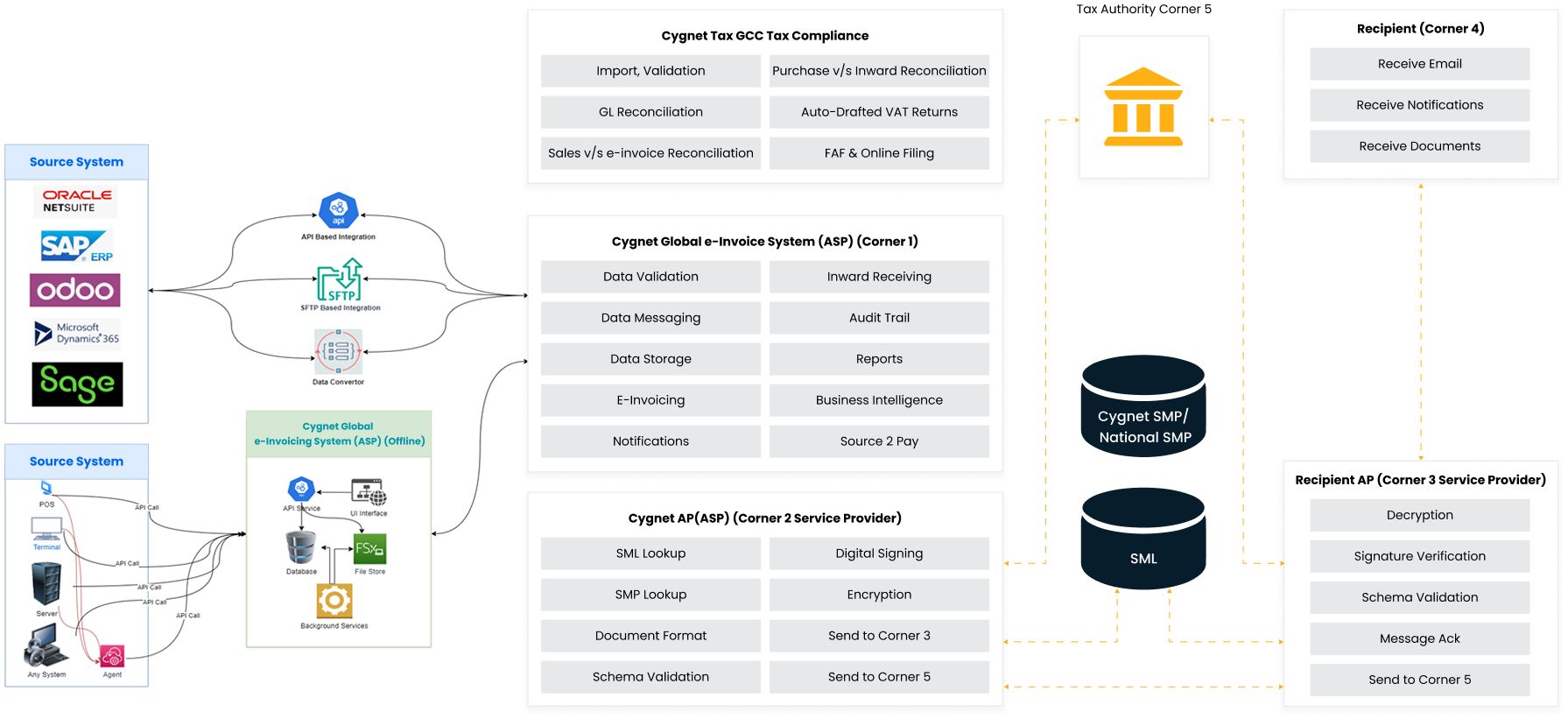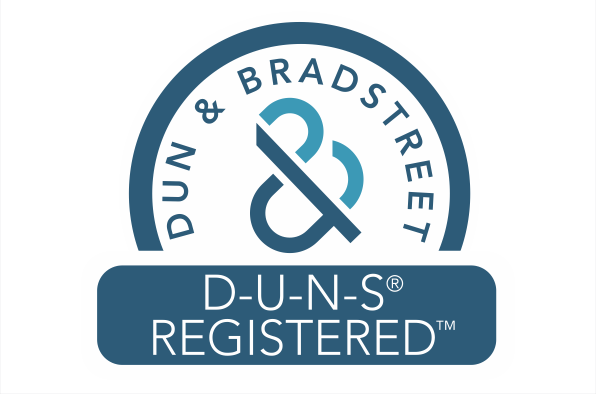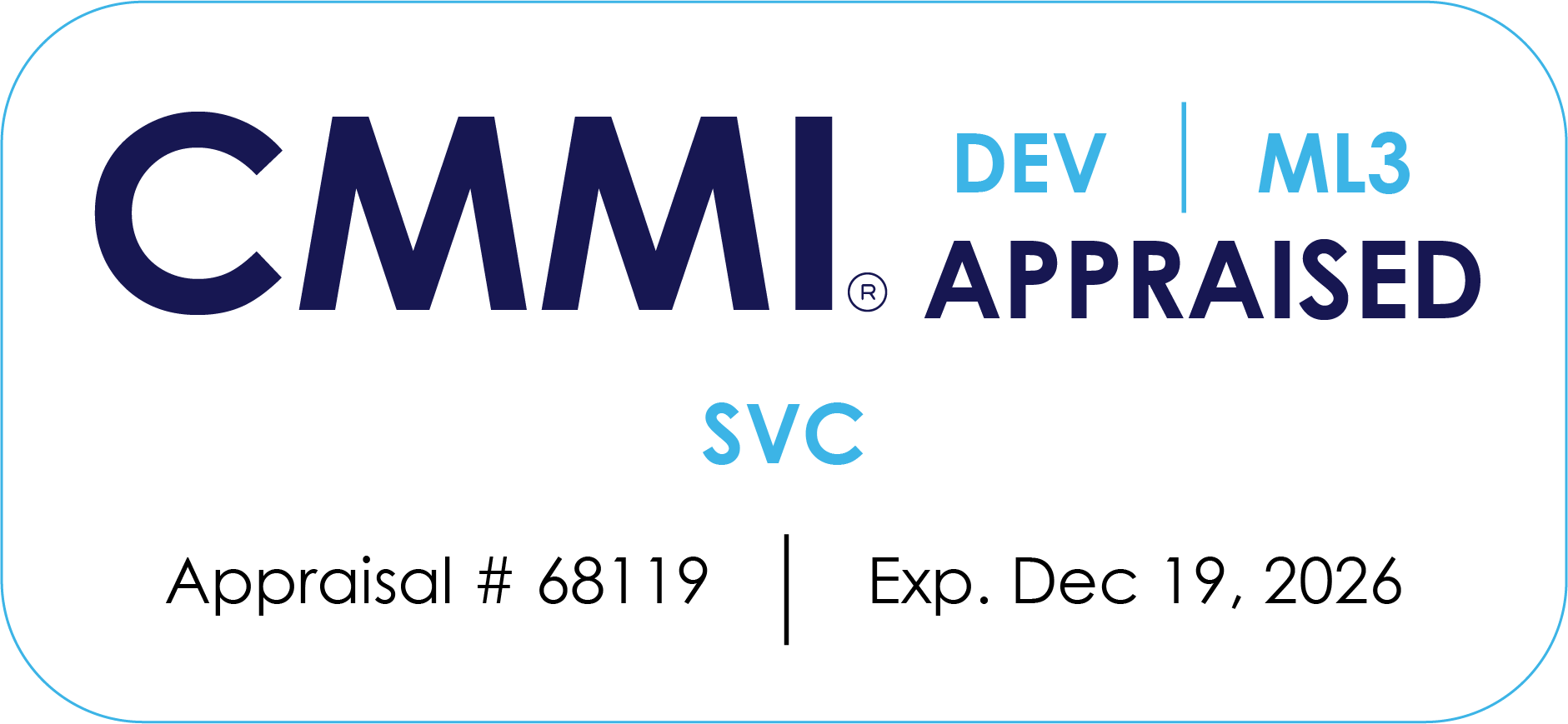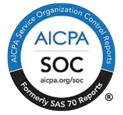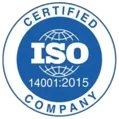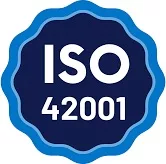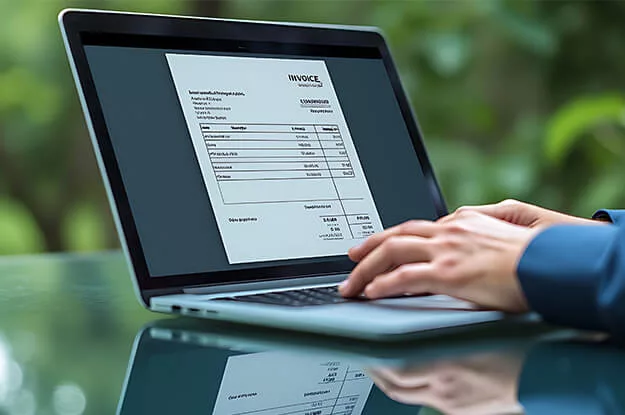Cygnet.One is Now a Peppol-Certified Service Provider in the UAE
Cygnet Digital IT Solutions LLC, our UAE entity, is now officially recognized by OpenPeppol as a Peppol Certified Service Provider, for both Access Point (AP) and Service Metadata Publisher (SMP) roles.
With this certification, Cygnet.One joins an elite group of just five UAE-based companies authorized to facilitate secure, real-time e-invoice exchange across the Peppol network. Our platform is engineered to handle large volumes of transactional data with enterprise-grade security, ensuring full alignment with the UAE’s 5-corner e-invoicing model.

The Compliance and Scalability Edge with Cygnet.One
Regulatory Compliance Assurance
By leveraging Cygnet’s certified AP/SMP, enterprises can be confident that their e-Invoices are transmitted and validated in line with UAE PINT specifications and the FTA’s compliance requirements.
Future-Proof Integration
This certification ensures readiness not only for the UAE mandate, but also for other Peppol-based frameworks globally, making it easier for multi-country enterprise groups to scale with consistency.
Our Accreditations
With tax authorities across the globe
e-Invoicing Milestones & Implementation Timeline
Q4 2024
Development Service Providers’ certification requirements and procedures.
April 2025
Introduction of PINT AE & Testbeds.
December 2025
Pilot Phase begins for UAE e-Invoicing implementation.
On the Horizon
Potential inclusion of Business-to-Consumer (B2C) transactions.
March 2025
Lunching of Dedicated portal for accreditation of Service Providers for UAE e-Invoicing.
Q2 2025
Introduction of e-Invoicing legislation.
July 2026
phase 1 – go live reporting for B2B & B2G e-Invoicing
How Cygnet.One Simplifies MLS Handling
End-to-End MLS Flow Management
Cygnet’s platform is engineered to support bi-directional MLS exchange across all corners of the Peppol model. Whether it’s an acceptance, rejection, or delay, our platform captures, interprets, and stores each MLS event with full traceability and timestamp logs.
ERP Workflow Integration
MLS isn’t just a status, it’s a trigger. Our solution
integrates MLS outcomes directly into your ERP or AP systems, allowing you to:
- Automatically post approved invoices
- Put rejections on hold
- Trigger vendor revalidation flows
- Update GRN/3-way matching processes in real time
No manual downloads or offline file checks, every MLS response is synced into the ERP as part of your digital compliance lifecycle.
Real-Time Alerts & Dashboards
Stay informed with proactive alerting on:
- Missing or delayed MLS responses
- Rejected invoices and failure reasons /li>
- Invoices stuck between AP and FTA
Cygnet’s dashboard gives your tax, finance, and IT teams a single pane of glass to monitor MLS flows, track exceptions, and take corrective actions instantly. Our UAE e-Invoicing software gives you the visibility needed to prevent bottlenecks and accelerate processing.
Secure Archival & Audit Trail
Every MLS message is archived alongside the invoice and FTA acknowledgment, helping you maintain end-to-end audit readiness. These records are searchable, timestamped, and accessible via role-based controls for internal or third-party audits.
Redundancy & Auto-Retry Logic
In cases of temporary outages or transmission failures between corners (e.g., C2 to C3 or FTA), Cygnet’s platform initiates automated retries and fallback queues to reduce the risk of missed MLS and ensure complete delivery.
Support for Complex Scenarios
From multi-entity configurations to cases involving non-Peppol buyers, Cygnet’s MLS engine is designed to handle:
- Split routing logic based on business unit
- Conditional posting triggers
- Buyer-specific response handling
- Deferred validation via testbed environments during pilot rollout
Cygnet.One’s UAE e-Invoicing solution incorporates MLS workflows by design, making it one of the most reliable UAE e-Invoicing software choices for automation-first enterprises.
Challenges & How We Solve Them
Common e-Invoicing Challenges
- Invoice data availability
- Lack of single source of truth
- Data validations
- Data hosting options
- Sync with local authorities
- Different providers for ASP, AP, SMPs
- Dependence on MLS acknowledgments
Cygnet.One’s Solution
- Automated tax compliance Eliminates manual errors & ensures regulatory adherence
- End-to-end integration Seamless connectivity with existing ERP, legacy & accounting systems
- Real-time tracking & reporting Ensures accuracy & transparency
- Robust data security & privacy Encrypted storage & secured data handling
- Archiving & audit compliance Minimum 5 years of legally compliant data retention















